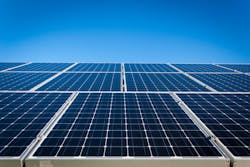The Challenges of Recycling Solar Panels
The solar industry is grappling with how to dispose of old solar panels, which often contain toxic materials.
Most photovoltaic solar panels are made of about 90 percent glass, but also include ingredients like lead, cadmium, and other toxic material. The chemicals cannot be removed without breaking the panels down, making it extremely difficult to recycle the glass, and putting landfills at risk of contamination. It also puts solar fields at risk during natural events like hail storms, earthquakes, and tornadoes.
Forbes reports that many industry experts are suggesting mandatory recycling programs for solar panels at the end of their lives.
The International Renewable Energy Agency (IRENA) in 2016 estimated there was about 250,000 metric tonnes of solar panel waste in the world at the end of that year. IRENA projected that this amount could reach 78 million metric tonnes by 2050.
